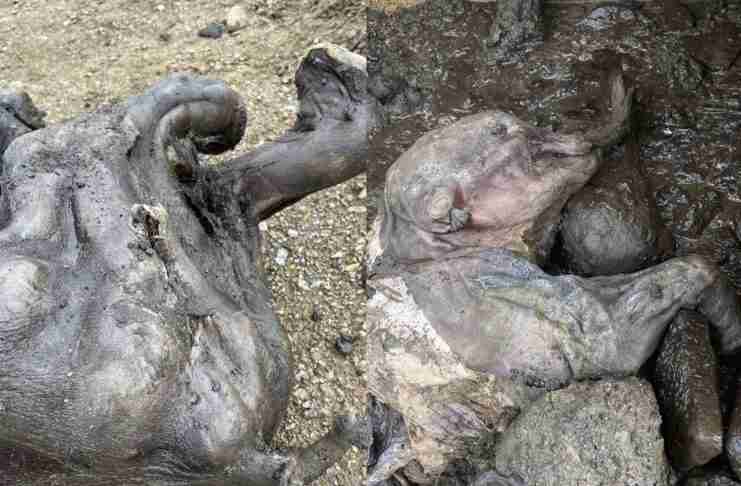
Gold miners working in the Klondike gold fields, which are a part of the Trondok Hwchin’s traditional tribal homeland in the Yukon, Canada, have unearthed a mummified baby woolly mammoth.
The mammoth calf, which Trondk Hwchin Elders dubbed “Nun cho ga”—”big baby animal” in Hän—was described as the most complete mammoth ever discovered in North America.
“One of the most incredible mummified ice age animals ever discovered in the world. She’s perfect and she’s beautiful. She has a trunk. She has a tail. She has tiny little ears. She has the little prehensile end of the trunk where she could use it to grab grass. … the most important discovery in palaeontology in North America”
Grant Zazula, the paleontologist for the Canadian territory of the Yukon, told the Canadian Broadcasting Corporation.
The woolly mammoth is estimated to have been a little more than one month old when she died. She is a little bit longer at 140 cm than the only other entire baby woolly mammoth found in Siberia in 2007.
A piece of grass was discovered in her stomach by the geologists who found her, suggesting that the infant’s final moments were spent grazing while she wandered a region where at the time wild horses, cave lions, and enormous steppe bison lived.
She may have been caught in mud before being frozen in permafrost during the ice age, based on her practically immaculate preservation.
What is a woolly mammoth?
A woolly mammoth (Mammuthus primigenius) is an extinct species of mammoth that existed from the Pleistocene until the Holocene epoch. Due to further specimens being discovered frozen in Siberia and Alaska, the species is among the most researched of any extinct animal.
The size of woolly mammoths was similar to that of contemporary African elephants, and they had exceptionally long tusks, which were modified incisor teeth. Adult male woolly mammoths are thought to have weighed up to 6 metric tons and have shoulders up to 3.4 meters tall, while adult female woolly mammoths had shoulders up to 2.6 meters tall and weighed up to 4 tons.
Woolly mammoths existed on St. Paul Island until 5,600 years ago, on Wrangel Island until 4,000 years ago, and possibly (based on ancient eDNA) in the Yukon up to 5,700 years ago. Woolly mammoths declined at the end of the Pleistocene, disappearing throughout most of their mainland range.
Where was the woolly mammoth found?
The find was made near Eureka Creek, at the base of the Baker-Minook divide. The Klondike Placer Miners’ Association and the Trondok Hwchin, geologists from the Yukon Geological Survey, collaborated with the University of Calgary to recover the bones.
“The Yukon has always been an internationally renowned leader for ice age and Beringia research. We are thrilled about this significant discovery of a mummified woolly mammoth calf: Nun cho ga. Without strong partnerships between placer miners, Trʼondëk Hwëchʼin, and the Yukon government, discoveries like this could not happen.”
Minister of Tourism and Culture Ranj Pillai
Disclosure: Please note that some of the links in this post are affiliate links. When you use one of my affiliate links, the company compensates me. At no additional cost to you, I’ll earn a commission, which helps me run this blog and keep my in-depth content free of charge for all my readers.

